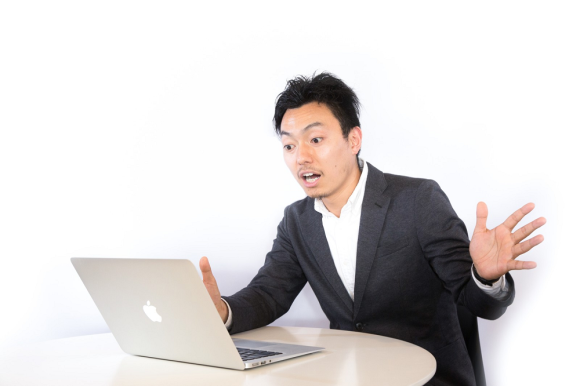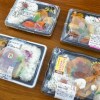
Hand cramps and style cramps are both part of job-hunting in Japan.
For foreign students looking for jobs in Japan, there’s more than just the local language to adapt to. Over the years, Japanese companies have developed certain norms in how they handle recruiting, and while they may seem natural to job-hunters who grew up in the culture, they can be startling for those who didn’t come to Japan until starting college.
With summer being the peak of the recruiting period in Japan, a seminar was recently held in Tokyo for students hailing from Southeast Asian nations who’re looking for employment, where some of the attendees spoke out about things they find strange about job-hunting in Japan.
1. Filling out forms by hand
In many countries, a hiring manager’s first instinct would be to toss a hand-written resume straight into the trash can, since adults are generally expected to know how to use a word processor. In Japan, though, taking the time to write your resume by hand conveys your deep respect for the position the company is recruiting for, and the same goes for filling out the official application. Even if you’ve downloaded the application as a PDF, you’re not supposed to type your information, but to grab a pen and carefully write out each word.
Oh, and as a matter of course, the resume shouldn’t just be hand-written, but written with excellent penmanship, once again as proof of how seriously you’ll be taking the job should it be offered to you.
2. A uniform appearance
While anything goes for street fashion in Japan, business attire is another story. Working professionals in Japan tend to dress both more formally and more conservatively than their overseas counterparts, and as an extension of that, job-hunters are expected to wear suits with extremely basic styles. As a matter of fact, plain black suits are so strongly associated with students seeking employment that they’re marketed as “recruit suits” by retailers in Japan.
The “basic black” logic applies to hair as well. Dyed hair will raise eyebrows and lower your chances of getting the job, and styling should be simple and neat, generally meaning short and trimmed for men and tied back in a ponytail for women.
While there’s at least a little bit of Japan’s conformist sentiments at play here, an arguably drab appearance also symbolizes an understanding that college is winding down and it’s time to get to work. After going to middle and high schools with strict dress codes and uniforms, college is considered a brief window in the life of Japanese people where they’re allowed to dress and look pretty much however they want, so a prim and proper appearance at an interview shows an understanding that the applicant is ready to grow up.
3. Group interviews
Large Japanese companies often do their recruiting in large, single batches annually, almost like a school enrolling new students. With so many applicants vying for the same classification of jobs, some companies streamline the process by conducting group interviews in early round of the process.
But even if everyone in a group interview gets asked the same questions, not everyone has an answer. One frustrated foreign student spoke of going to a group interview where applicants were asked to talk about their experience in leadership roles. Some of the applicants proudly told stories of when they’d acted as leaders in school activities or at their part-time jobs, but those without such experiences had nothing to contribute, and so had to sit by silently until the next question.
4. Not knowing what kind of work you’ll be doing
While this isn’t true for every position in Japan, sometimes companies recruit for what’s called sogoshoku, or “comprehensive work.” What that means is that once hired, you’ll periodically assist or be rotated to various departments within the company.
On the plus side, that can help new recruits see how the company works as a whole, and also lets them acquire a wide range of skills and figure out what sort of day-to-day work they have an interest in and aptitude for. At the same time, it can be unnerving to apply for a job without knowing what your exact responsibilities are going to be.
If some of the items on this list don’t sit right with you, there’s something important to keep in mind. Though these are all aspects of how Japanese companies do their ordinary recruiting, things can be very different for positions or divisions with an international focus, and in such cases there’s usually a bit more flexibility in the job-hunting process (especially in the area of hand-written resumes). However, if you’re planning to throw your hat into the general recruiting ring, and compete against Japanese job-hunters for a position, you’ll have the best chance of success if you play by the local rules.
Source: Yahoo! Japan News/withnews via Jin
Top image: Pakutaso
Insert images: Pakutaso (1, 2)
Casey doesn’t write his tweets by hand or wear a suit when sending them, but you can follow him on Twitter anyway.



 Foreigners in Japan sound off on the top four quirks of the Japanese job-hunting system
Foreigners in Japan sound off on the top four quirks of the Japanese job-hunting system Japanese ministers call for reform of company hiring practices that focus on new graduates
Japanese ministers call for reform of company hiring practices that focus on new graduates “Face Hiring”: Japanese cosmetics company Isehan’s new hiring campaign is causing a stir
“Face Hiring”: Japanese cosmetics company Isehan’s new hiring campaign is causing a stir Pantene ad asks why people in Japan are forced to look the same when job hunting
Pantene ad asks why people in Japan are forced to look the same when job hunting Japanese job-hunters reportedly dismayed by requests for “photos showing who you are as a person”
Japanese job-hunters reportedly dismayed by requests for “photos showing who you are as a person” Station of despair: What to do if you get stuck at the end of Tokyo’s Chuo Rapid Line
Station of despair: What to do if you get stuck at the end of Tokyo’s Chuo Rapid Line Japanese government will check and judge new baby name pronunciations, presents guidelines
Japanese government will check and judge new baby name pronunciations, presents guidelines This downtown Tokyo cafe is like a time machine that takes you back 50 years into the past
This downtown Tokyo cafe is like a time machine that takes you back 50 years into the past Totoro towels gently glow in the dark to set the Ghibli nighttime mood in your home【Photos】
Totoro towels gently glow in the dark to set the Ghibli nighttime mood in your home【Photos】 Shakey’s is back! All-you-can-eat pizza chain returns to downtown Tokyo’s Shinjuku
Shakey’s is back! All-you-can-eat pizza chain returns to downtown Tokyo’s Shinjuku Major Japanese city is abolishing extracurricular activities at all of its middle schools
Major Japanese city is abolishing extracurricular activities at all of its middle schools Japan’s top 10 food travel destination prefectures【Survey】
Japan’s top 10 food travel destination prefectures【Survey】 Makers of Dassai to brew sake in space and sell 100 milliliters for 100 million yen
Makers of Dassai to brew sake in space and sell 100 milliliters for 100 million yen The best Christmas Market in Japan? Yokohama event is top choice for travellers
The best Christmas Market in Japan? Yokohama event is top choice for travellers We taste makunouchi bento at four Japanese convenience store chains【Taste comparison】
We taste makunouchi bento at four Japanese convenience store chains【Taste comparison】 Japanese company develops classy heavy metal band frames for glasses
Japanese company develops classy heavy metal band frames for glasses One of Japan’s rarest sweets is a sell-out hit that looks and tastes like frost
One of Japan’s rarest sweets is a sell-out hit that looks and tastes like frost Studio Ghibli showcases traditional craftsmanship with new wallet range
Studio Ghibli showcases traditional craftsmanship with new wallet range Mysterious light-up rainy night-sound Totoro figure doesn’t actually show a scene from the anime
Mysterious light-up rainy night-sound Totoro figure doesn’t actually show a scene from the anime Over 800 Studio Ghibli anime world paintings compiled in beautiful new hardcover art book【Pics】
Over 800 Studio Ghibli anime world paintings compiled in beautiful new hardcover art book【Pics】 Spirited Away and Princess Mononoke plushies show a softer side of formidable Ghibli characters
Spirited Away and Princess Mononoke plushies show a softer side of formidable Ghibli characters Studio Ghibli tea blends contain ingredients inspired by My Neighbour Totoro
Studio Ghibli tea blends contain ingredients inspired by My Neighbour Totoro Possessing Harry Potter’s Sword of Godric Gryffindor is now illegal in Japan
Possessing Harry Potter’s Sword of Godric Gryffindor is now illegal in Japan Uniqlo announces first-ever collaboration with horror manga master Junji Ito【Photos】
Uniqlo announces first-ever collaboration with horror manga master Junji Ito【Photos】 J-pop mega star Ado reveals she’s been living in the U.S., may not understand language acquisition
J-pop mega star Ado reveals she’s been living in the U.S., may not understand language acquisition Starbucks Japan is calling it quits with paper straws
Starbucks Japan is calling it quits with paper straws Studio Ghibli releases new range of cardigans for anime fans
Studio Ghibli releases new range of cardigans for anime fans Japan’s most popular castle raising ticket prices by up to 200 percent for non-local tourists
Japan’s most popular castle raising ticket prices by up to 200 percent for non-local tourists Furikake rice seasoning sales are soaring, which is bad news for Japan as a whole
Furikake rice seasoning sales are soaring, which is bad news for Japan as a whole Studio Ghibli heroine cardigans give you warmth and strength to face everyday challenges
Studio Ghibli heroine cardigans give you warmth and strength to face everyday challenges Eight unforgettable hot springs, as recommended by Japan’s “Professor Bath”
Eight unforgettable hot springs, as recommended by Japan’s “Professor Bath” McDonald’s new Happy Meals offer up cute and practical Sanrio lifestyle goods
McDonald’s new Happy Meals offer up cute and practical Sanrio lifestyle goods Foreign tourists on Shinkansen bullet train break suitcase etiquette, angering local passengers
Foreign tourists on Shinkansen bullet train break suitcase etiquette, angering local passengers [Deleted] Article written for April Fool’s Day 2018
[Deleted] Article written for April Fool’s Day 2018 Japanese government to make first change to romanization spelling rules since the 1950s
Japanese government to make first change to romanization spelling rules since the 1950s Foreigner’s request for help in Tokyo makes us sad for the state of society
Foreigner’s request for help in Tokyo makes us sad for the state of society Japanese convenience store Family Mart announces abolishment of eat-in spaces
Japanese convenience store Family Mart announces abolishment of eat-in spaces Life-size vibrating Legend of Zelda Master Sword for sale from Nintendo【Photos】
Life-size vibrating Legend of Zelda Master Sword for sale from Nintendo【Photos】 Princesses, fruits, and blacksmiths: Study reveals the 30 most unusual family names in Japan
Princesses, fruits, and blacksmiths: Study reveals the 30 most unusual family names in Japan Studio Ghibli releases free-download board game — Here’s how to play it without reading Japanese
Studio Ghibli releases free-download board game — Here’s how to play it without reading Japanese Japanese clothing chain offers an answer to job-hunting suit conundrum
Japanese clothing chain offers an answer to job-hunting suit conundrum To handwrite, or not to handwrite? Recruiter lays into ‘laziness’ of young Japanese job hunters
To handwrite, or not to handwrite? Recruiter lays into ‘laziness’ of young Japanese job hunters New cosplay job-hunting site opens, offers everything from one-day to full-time positions
New cosplay job-hunting site opens, offers everything from one-day to full-time positions Japanese advertising company selling space on young women’s armpits, recruiting models【Photos】
Japanese advertising company selling space on young women’s armpits, recruiting models【Photos】 Window in life when Japanese people can act like individuals is depressingly short, tweet asserts
Window in life when Japanese people can act like individuals is depressingly short, tweet asserts No gender, photo, or first name – Japanese company makes major shakeup to job application forms
No gender, photo, or first name – Japanese company makes major shakeup to job application forms Man forgets the first rule of Japanese job interviews: Don’t steal the boss’ wallet
Man forgets the first rule of Japanese job interviews: Don’t steal the boss’ wallet “Get paid to chat online with Japanese girls” part-time job sounds like scam, is apparently legit
“Get paid to chat online with Japanese girls” part-time job sounds like scam, is apparently legit Four frustrating attitudes women in Japan run into when interviewing for jobs, grouped by age
Four frustrating attitudes women in Japan run into when interviewing for jobs, grouped by age Social media users boast of plans to grope schoolgirls on day of Japan’s most important test
Social media users boast of plans to grope schoolgirls on day of Japan’s most important test “Be a blank slate”: The way to get hired in Japan?
“Be a blank slate”: The way to get hired in Japan? It’s all about the money: The best (and worst) paid student jobs in Japan
It’s all about the money: The best (and worst) paid student jobs in Japan New Pantene commercial interviews Japanese trans individuals about difficulties of job hunting
New Pantene commercial interviews Japanese trans individuals about difficulties of job hunting Spend a shift working in a terrible, soul-crushing Japanese company at this “special” Tokyo event
Spend a shift working in a terrible, soul-crushing Japanese company at this “special” Tokyo event All-boys’ high school in Japan has mandatory grooming lesson, teaches about skincare, hairstyling
All-boys’ high school in Japan has mandatory grooming lesson, teaches about skincare, hairstyling Japanese university says your girlfriend might dump you, other harsh truths in recruiting ad
Japanese university says your girlfriend might dump you, other harsh truths in recruiting ad
Leave a Reply